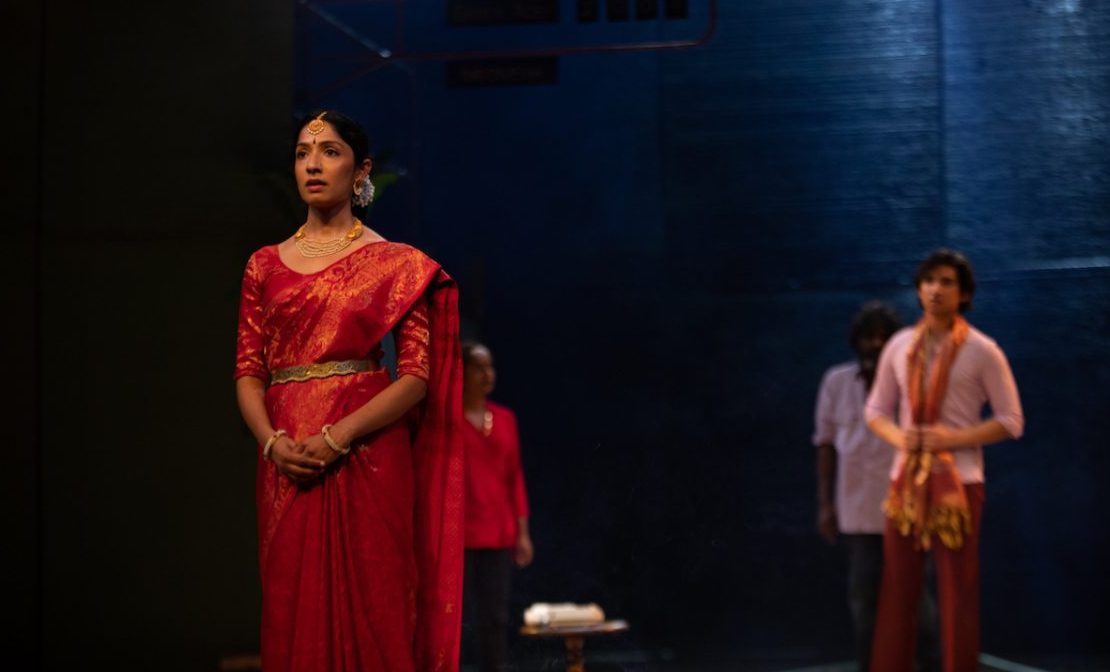In Sri Lanka, in July 1983, thousands of Tamil civilians were killed during a week of vicious rioting. This horrific period in the country’s history had its roots in years of tension between Tamils and Sinhalese following the country’s independence from the British Empire and has been noted as the start of the decades-long Sri Lankan civil war. As a result, hundreds of thousands of Tamils fled Sri Lanka, settling in countries all around the world, including Australia.
It is this globally significant event and the fifty years of history that surround it that writer S. Shakthidharan and associate writer Eamon Flack have taken as the subject of Counting and Cracking. In less assured hands, such an ambitious effort might founder on the sheer volume of historical material they have to work with and the multi-generational, cross-cultural love stories that form the architecture of the play.
However, the remarkably deft handling ensures nothing feels confusing or heavy-handed. By focussing on the love stories rather than the politics – ‘weddings are more important than politics’ – the play remains relatable and personal, no matter how traumatic the wider political context. During its three-hour running time, the play inexorably moves towards the awful events of July 1983 at its centre. However, the perfect pacing ensures the hours fly by as the tension gradually ratchets up.
We are first introduced to Siddhartha (Shiv Palekar) and his mother Radha (Nadie Kammallaweera) on the outskirts of Sydney as they scatter the ashes of Siddhartha’s grandmother in a traditional Tamil ceremony. Born in Australia, Siddhartha flounders in the unfamiliar Tamil language and the traditions of his Sri Lankan heritage, badgered by his loving and over-protective mother.
Later that day, he meets Lily (Abbie-Lee Lewis) and a relationship starts to grow between the two. From this rather sweet opening, the story covers the 50 years of personal and political events that have led Siddhartha and Radha to this point, flitting regularly between Sri Lanka and Australia.
Some clever staging ensures the audience is never at a loss for when and where we are, while the largely empty stage and a pair of iron gates are all that is needed to conjure everything from 1950s Colombo to Sydney in 2004. The movement through different time zones allows for some nice touches, as older characters are able to see younger versions of themselves or their lovers passing before their eyes on stage. Much of the play takes place in Tamil or Sinhalese, and the live, on-stage translations into English make for an immediate and immersive experience.
In a truly superb ensemble cast, it is hard to single out any one actor for particular praise; suffice to say that there’s not a weak link on the show. However, first among equals are Vaishnavi Suryaprakash and Nadie Kammallaweera, who respectively play the younger and older Radha, around whom the story revolves. Suryaprakash captures the fire, passion, and belief of the bright young woman Radha, while Kammallaweera brings plenty of nuance to the woman she has become.
Much of Counting and Cracking is concerned with affairs of state, with how a country and its people can tear itself apart. However, ‘life must hijack politics’, and the play is first and foremost a love story about respect, identity, and how we discover where we have come from and where we belong. It is a truly epic tale in its ambition, its scale, and its success.

